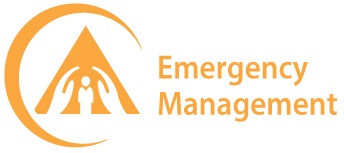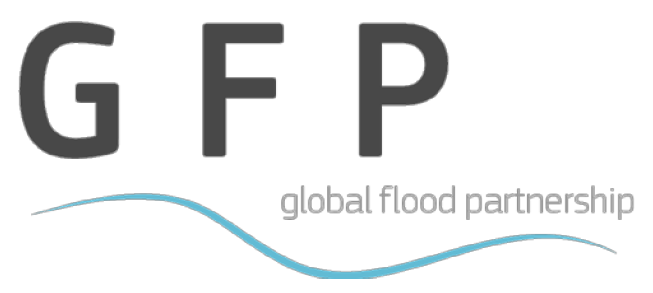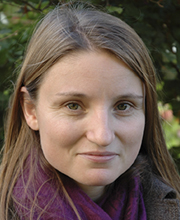#HydrologyWS21




 Irina Sandu
Irina SanduTeam Leader Physical Processes, ECMWF
Destination Earth is a great opportunity to advance Earth-system modelling across scales. As part of the European green deal, the European Commission has announced Destination Earth as a key action to "develop a very high precision digital model of the Earth to monitor and simulate natural and human activity, and to develop and test scenarios that would enable more sustainable development and support European environmental policies." These digital twins will advance Earth-system simulation and observation capabilities beyond present-day capabilities to produce a break-through for monitoring and prediction and for combining Earth-system with impact science in support of decision making. The first, high-priority digital twins will focus on weather induced and geophysical extremes and climate adaptation. The programme is expected to start in 2021 and deploy initial production capabilities after 30 months.
 dy Parker
dy ParkerProfessor of Philosophy, Virginia Tech
My focus will be on conceptual issues in the use of simulations for prediction. I will emphasize three interrelated points. First, it is useful to think of both datasets and simulations (including ensembles) as representations that can be evaluated in terms of their adequacy or fitness for particular purposes. Second, we should consider carefully the extent to which our ensembles are fit for the uncertainty quantification tasks to which they are put; often we cannot straightforwardly infer from ensemble results to conclusions about the extent of our uncertainty. Finally, we need not adopt a one-size-fits-all approach to the communication of uncertainty, where we invariably provide precise probabilities; coarser representations of uncertainty – in terms of imprecise probabilities or levels of confidence – often will more accurately depict the limitations of our knowledge and may provide a better aid to decision making.
 Louise Slater
Louise SlaterHybrid hydrological forecasting – the coupling of climate predictions with statistical or machine learning models – has gained in popularity in recent years, as a complementary tool alongside traditional physically-based methods. Hybrid approaches show considerable promise: they are computationally efficient, can learn from a broad variety of nonstationary input data, and benefit from recent progress in multimodel blending, postprocessing, and artificial intelligence. This talk will provide an overview of recent developments, future potential, and ongoing challenges in hybrid monitoring and forecasting.
 Guy J-P. Schumann
Guy J-P. SchumannSchool of Geographical Sciences, University of Bristol; Research and Education Department, RSS-Hydro, Dudelange, Luxembourg
With floods being a top-ranking disaster in terms of insured and uninsured losses, and with flood frequency and magnitude projected to increase in future, there is a clear need for high-quality, reliable flood forecasting. Given that floods are happening at the global scale but their impacts and consequences are truly felt at the local community level, flood forecasting needs to be at the highest resolution possible and multi-dimensional in space. Recent advances in Earth-observing technologies, in particular with the opening of the new space economy as well as considerable progress in computing architecture, interoperability and machine learning, have given rise to many opportunities but also many challenges. This talk will discuss some of these opportunities and associated challenges using recent examples of machine learning approaches to augment flood predictions with physical models and to enable precipitation prediction at local scale. The talk also examines new EO methods, such as radio occultation data and rapid processing of flood maps to enable immediate assimilation into NWP models and flood forecasting models, respectively.
 Elisabeth Stephens
Elisabeth StephensAssociate Professor at the University of Reading; Forecast-based financing science led at the Red Cross Red Cresent Climate Centre
The use of global flood forecasts by the humanitarian community has provided a stern test for their useability. In this talk I will present some of the ongoing research in this area, and how these findings have supported a more evidence-based and confident use of forecasts for anticipatory humanitarian action across the world. Further, I will draw attention to key issues within global flood forecasting that still need to be addressed, and partnerships that still need to be strengthened, to improve their relevance and value. Lastly, I will outline the low (and high) hanging fruit for research to strengthen the future use of flood forecasts by the humanitarian community.
 Micha Werner
Micha WernerAssociate Professor, Water Resources & Ecosystems, IHE Delft Institute for Water Education
Information provided through climate services, whether warnings to vulnerable communities of imminent hazards such as floods and droughts, or seasonal outlooks to support water resources planning, have a clear value proposition. This may be to inform timely action by those at risk, or to support better decisions in utilising scarce water resources. Research shows that a skillful forecast is a necessary ingredient in realizing the value proposition, but equally shows that it is not sufficient. Usage of climate services is challenged by several factors, including the difficulty in linking the information forecasts contain with the local needs, knowledges and policy contexts that frame the decisions users make.
Here we explore three examples from recent research where we use social sciences based methods and analysis of water allocation policies to reveal the local knowledge users have, the environmental cues that they observe to initiate actions, and the policy dimensions relevant to the decision making process. These three examples include flash flood warnings in Northern Malawi, drought warning in Southern Malawi and seasonal water allocation in Australia. Among the many rich insights we gain, a theme common to all three is the spatial and/or temporal dimension of hydrometeorological information users identify as relevant to their decisions. We illustrate through these examples that this approach not only gives key insight into the local context of user needs and decision making, but also posit that it helps discern the relevance of information from large scale contemporary science-based forecasts. We argue that transdisciplinary research as used here contributes to connecting large scale scientific data to local needs and decision making through understanding the social and behavioural factors that govern user actions. A parallel could well be found in our own first instinct when receiving a severe weather warning for where we live. We look out of the window.